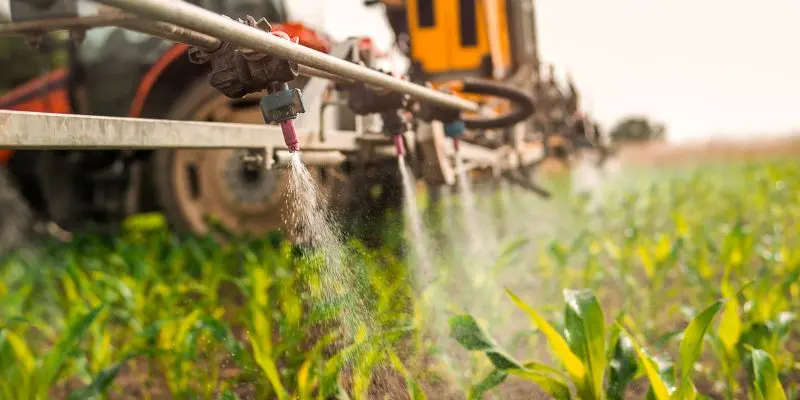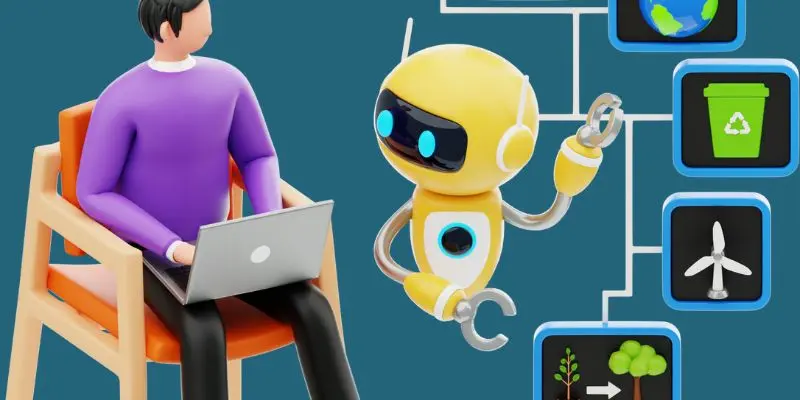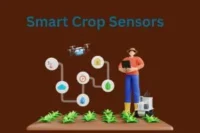Precision Crop Monitoring – Grow Smarter, Not Harder
Published: 13 May 2025
Precision crop monitoring is a data-driven approach to agriculture that uses tools like drones, soil sensors, and satellite imagery to track crop health, soil conditions, and environmental changes in real time. According to the Food and Agriculture Organization (FAO), this technology significantly increases input efficiency and yield potential by allowing farmers to make site-specific decisions based on actual field conditions rather than assumptions.
So, guys, without wasting time, let’s jump into the article to learn Precision Crop Monitoring – Grow Smarter, Not Harder
2. What Is Precision Crop Monitoring?
Precision crop monitoring is the use of advanced technologies—such as drones, soil sensors, and satellite imagery—to collect real-time data about crop health, soil conditions, and field performance. It enables farmers to make accurate, site-specific decisions that improve productivity, reduce waste, and support sustainable farming practices.

- A method that uses technology to observe, measure, and respond to crop conditions.
- Includes tools like drones, satellite imaging, soil sensors, and software.
- Helps monitor plant health, detect diseases, measure moisture, and track growth patterns.
- Gives farmers detailed insight into what’s happening across their fields—down to the row.
Why It Matters – The Heart of Modern Farming
- Today’s farmers face rising costs, climate stress, and market pressure.
- Precision monitoring means you can respond faster, waste less, and grow more.
- Emotionally, it brings a sense of control, clarity, and stewardship over your land.
- “You don’t just watch crops grow—you understand what they need.”
Key Technologies Used in Precision Monitoring
- Drones – Capture aerial images to detect plant stress, irrigation issues, or pest outbreaks.
- Soil Sensors – Measure moisture, pH, temperature, and nutrients in real time.
- Satellite Imagery – Provides large-scale field insights and long-term crop trend data.
- Farm Management Software – Turns raw data into actionable tasks and alerts.
- Each tool plays a unique role but works best when integrated together.
Top Benefits of Precision Crop Monitoring
- Boosted Yields – Crops receive the exact nutrients and care they need, when they need it.
- Reduced Costs – Less fertilizer, less water, fewer chemicals = more money saved.
- Early Problem Detection – Spot issues like pests or disease before they spread.
- Sustainable Farming – Optimize inputs, reduce waste, and protect the environment.
- Peace of Mind – Know your land is being cared for down to the root zone.
How It Works – Simple Steps to Smarter Growing
- Step 1: Install or access basic sensors, imaging tools, or farm apps.
- Step 2: Collect data on plant health, moisture, temperature, and growth.
- Step 3: Use analytics or software to interpret that data.
- Step 4: Act based on precise insights—apply water, fertilizer, or treatment only where needed.
Real-Life Example – A Field Transformed
- A mid-sized wheat farmer using drone imagery noticed uneven growth patterns.
- Soil sensors revealed low moisture zones—he adjusted irrigation only in that area.
- Yield improved by 12% with no extra input—just smarter targeting.
- “I used to walk the field and guess. Now I know. And my field thanks me for it.”
Not Just for Big Farms – Small Farms, Big Impact
- Affordable solutions like Bluetooth soil sensors, drone rentals, and mobile apps are now available.
- Even small gardens or one-acre plots can benefit from tech-driven care.
- Start simple: one sensor and a free farm app can transform your decision-making.
Challenges to Be Aware Of
- Initial costs may be high for advanced tech—but ROI often offsets it quickly.
- Requires basic tech literacy—some farmers may need training.
- Internet access and reliable data connections may be limited in rural areas.
- But these are solvable—and the benefits far outweigh the barriers.
- Start with a soil test or a basic moisture sensor.
- Use free or low-cost apps to track growth, watering, and fertilizing.
- If possible, try drone imaging once a season for aerial insights.
- Join a local AgriTech group or co-op for shared tools and knowledge.
Future of Precision Crop Monitoring
- Integration with AI, IoT, and machine learning will allow full automation.
- Future systems may predict issues before they happen using patterns and past data.
- “Imagine a farm that learns with you—and from you.”

Final Thoughts
- Precision crop monitoring is not just a tool—it’s a mindset.
- It turns farming from a guessing game into a guided, intuitive practice.
- When you connect with your land through data, you grow more than crops—you grow trust, peace, and purpose.

- Be Respectful
- Stay Relevant
- Stay Positive
- True Feedback
- Encourage Discussion
- Avoid Spamming
- No Fake News
- Don't Copy-Paste
- No Personal Attacks

- Be Respectful
- Stay Relevant
- Stay Positive
- True Feedback
- Encourage Discussion
- Avoid Spamming
- No Fake News
- Don't Copy-Paste
- No Personal Attacks





